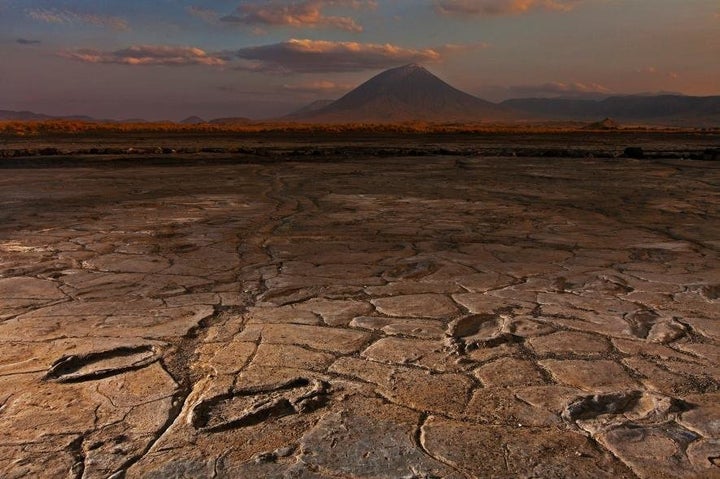
Scientists working in Tanzania have cataloged a large and extremely rare trove of human footprints left behind some 5,000 to 19,000 years ago when a group of people slogged their way across muddy terrain along the southern shore of Lake Natron.
The more than 400 footprints are located at a site called Engare Sero, not far from a volcano known as Ol Doinyo Lengai (”mountain of god,” in the local Maasai language), National Geographic reported.
These aren’t the oldest known prints made by modern humans. That distinction belongs to “Eve’s footprints,” a set of prints discovered in South Africa in 1995 that date back about 117,000 years.
But no other site in Africa has as many ancient Homo sapiens footprints. That makes the Engare Sero prints a big deal ― especially given how much ancient footprints, and the ancient paths on which they’re made, can tell us about our distant ancestors.
”Measurements of footprints can reveal information about foot anatomy, body size and gait, whereas analysis of trackways and the site as a whole can provide information about social behavior,” Dr. Cynthia Liutkus-Pierce, the Appalachian State University geologist and National Geographic grantee who leads the team that’s been studying the prints, told The Huffington Post in an email.
What do the Engare Sero prints have to say? They were made by about a dozen people, mostly women and children. Some of the people were jogging at a 12-minutes-per-mile pace. One might have had a broken toe.
Ouch.
“It’s a very complicated site,” Dr. William Harcourt-Smith, a City University of New York paleoanthropologist and a member of the team of researchers, told NatGeo. “There’s one area where there are so many prints, we’ve nicknamed it the ‘dance hall,’ because I’ve never seen so many prints in one place. It’s completely nuts.”
The prints ― described in a paper published Sept. 28 in the journal Palaeogeography, Paleoclimatology, Paleoecology ― were laid down in ash-laden mud from the nearby volcano. (See the animation below for an idea of how things might have happened.)
The prints were known to locals prior to 2006 but didn’t come to the attention of Liutkus-Pierce until 2008, NatGeo reported.
At first the team of researchers thought the prints might be hundreds of thousands of years old, The Washington Post reported. But it proved hard to pinpoint their age until radiometric dating of crystals in the soil at the site finally yielded the 5,000-to-19,000-year range.
Liutkus-Pierce told HuffPost Science that her team is still analyzing the prints. In addition, she said, they are working with the Tanzanian government to make sure the track site is both protected and accessible to scientists.
Whatever lies ahead for the prints, when Liutkus-Pierce looks back she can still recall the thrill of seeing them for the first time.
”I really felt emotional ― these were the footsteps of our ancestors, and I was able to see them in the field shortly after their discovery,” she said in the email. “It was very exciting for me.”

